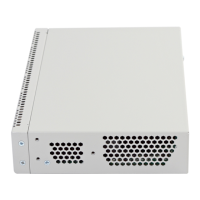#Service name for a session (A – the service is enabled, N – the service is disabled)
Cisco-Account-Info = "{A|N}<SERVICE_NAME>"
Service profile:
<SERVICE_NAME> Cleartext-Password := <MACADDR>
# Matches class-map name in ESR settings
Cisco-AVPair = "subscriber:traffic-class=<CLASS_MAP>",
# Action that is applied to the traffic by ESR (permit, deny, redirect)
Cisco-AVPair = "subscriber:filter-default-action=<ACTION>",
# The ability of IP flows passing (enabled-uplink, enabled-downlink, enabled, disabled)
Cisco-AVPair = "subscriber:flow-status=<STATUS>"
Add a subnet, in which ESR is located, to the clients.conf file:
client ESR {
ipaddr = <SUBNET>
secret = <RADIUS_KEY>
}
In this case the RADIUS server configuration will be as follows:
Add the following strings to the “clients.conf” file:
client BRAS {
ipaddr = 192.168.1.1
secret = password
}

